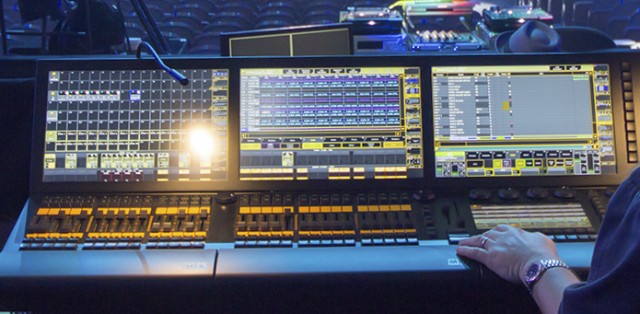
It can be a daunting task choosing which console to invest precious time and money in for those starting out in the lighting industry. There are hundreds of consoles to choose between from a wide variety of manufacturers. After reading this article you will 100% know exactly which console to invest in! Ok, that may be a slight stretch. This article will address some questions to ask yourself as you decide which console to choose, break down terminology you will run into and look at some consoles that are out there. It's always a good idea to talk to other people in the lighting industry for advice as well.
After picking the brains of many of the lighting designers, programmers and sales people in and out of 4Wall, these were the recurring questions that came up:
- Who will be spending the most time with this console? Will you have one person who will program the console from start to finish and operate it for every show, or will there be multiple people who program and operate the console?
- Does the lighting programmer/s already have experience programming and operating a console? If so, which family (manufacturer) of console is it?
- What type of fixtures will your rig have and how many? Will there be dimmers, LEDs, moving lights, media servers and/or other equipment?
- What's your budget?
- Will it be more practical to rent or buy a console based on how often you will be using it?
Once you have the answers to those questions, you can begin to research the many consoles out there. As you look at a console's specifications and features, you will run across terms that may or may not be familiar to you. Here's a brief overview of some words you will encounter and what they mean to you:
- Fixture/Channel: A single device. This can refer to a dimmer (conventional fixtures) or a large moving head automated fixture.
- Dimmer: A device that allows intensity adjustment for a single conventional lamp.
- Conventional: This refers to simple lighting fixtures usually consisting of just a light bulb (Halogen, Tungsten, etc.) inside housing with a reflector to direct the light and lens to focus it.
- Parameter: This is an MA Lighting term that refers to a single type of control (pan/tilt/dimmer/red/green/blue).
- DMX Addresses: Each universe of DMX contains 512 addresses, allowing you to control up to 512 dimmers.
- XLR: Connector type, usually 5 pin, sometimes 3pin that carries a DMX signal to dimmers and lighting fixtures.
- Physical Output: Female XLR plug on a console that transmits a DMX signal. (usually 5 pin, but it can be 3 pin)
- Digital Output: DMX transferred over Ethernet cable. There are many types of digital signals, the most common are ArtNET, KiNET, and sACN.
- Scenes: Pre-programmed looks that you can transition smoothly between by using a cross-fade.
- Faders: A slider on the console that is used to fade a dimmer, fixture, or group of fixtures depending on how your console is set up.
- Patch: How DMX addresses are assigned to dimmers and fixtures.
- Ethernet: Network cable, standard across both consumer and professional.
- Midi: Refers to both the cable and the signal and is used to trigger commands remotely.
Now let's take a look at some consoles. I chose these consoles based on what I have access to through 4Wall's rental inventory. There are many additional consoles out there from other manufacturers that you should also research.
Click here or on the image below for a full size image that you can zoom in and out on.
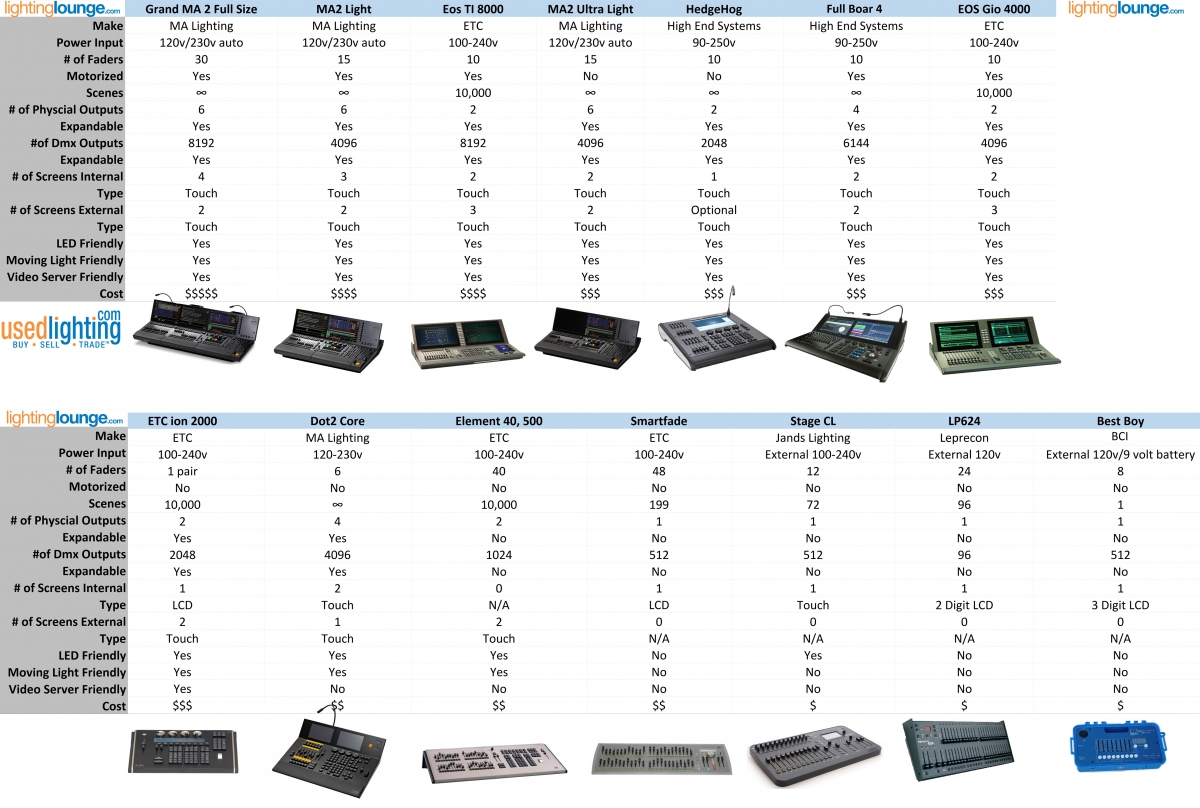
*Disclaimer* - I pulled the most accurate information I could find on each console from the manufacturers website and most recent manual. Always check a manufacturers website for the latest version of software and manual for each console. Software is constantly being updated and may make previous information outdated.
| 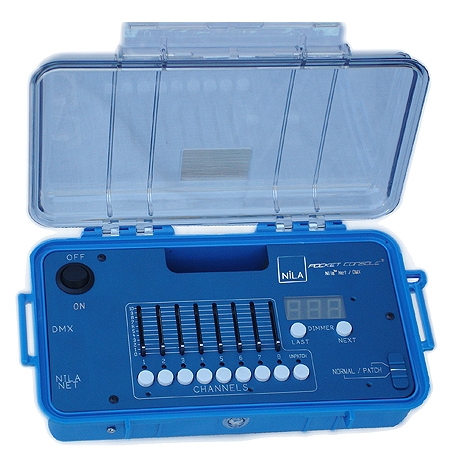
| BCI Pocket Console Best Boy The Baxter Controls Best Boy console is a basic and reliable device to setup or run a DMX-512 controlled, single universe system. The console features 8 faders so you can record up to 8 submaster scenes. |
| 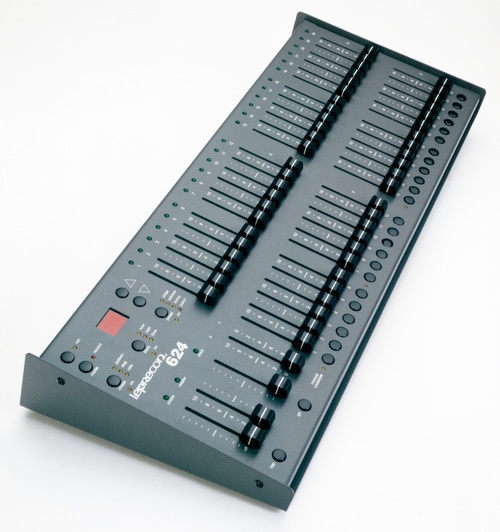
| Leprecon LP-624 The LP624 console is very easy to use. You can have
two scenes and it can control up to 96 dimmers. You
can also easily program chases to make your lights
run on a continuous pattern. This console is good
for small theatres, churches, & schools.
|
| 
| ETC SmartFade 2496 SmartFade offers a great feature range including
hands-on manual control, memory driven operation,
and an impressive array of features for systems
work. Simple access to control channels via
individual faders makes this board a great choice
for venues that need two or single scene operation. | Total DMX Outputs: | 1 | | Faders: | 48 | | Fixtures (Channels): | 96 | | DMX Addresses: | 512 | | Scenes: | 2 | | Downloadable Specs | | |
| 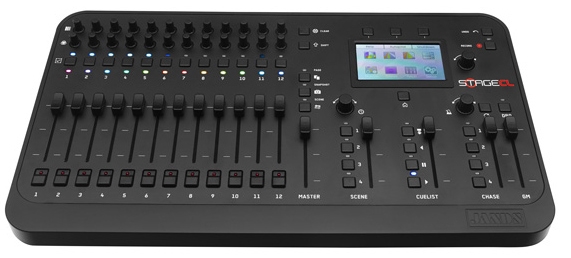
| Jands Stage CL Designed specifically for LED fixtures but just as suitable
for conventional lights, the Stage CL gives you full control
of your LEDs. The console has built in features that make
it easy to adjust the color of your LEDs simply and quickly.
It can also record sequences, scenes and chases. |
| 
| ETC Element 40, 500 Element is designed for mainly conventional lighting
rigs with some motorized accessories, LEDs and a
few moving lights. Element consoles offer built in
LTP channel and submaster faders that change
mode with the turn of a switch. | Total DMX Outputs: | 2 | | Faders: | 40 | | Fixtures (Channels): | 500 | | DMX Addresses: | 1,024 | | Downloadable Specs | | |
| 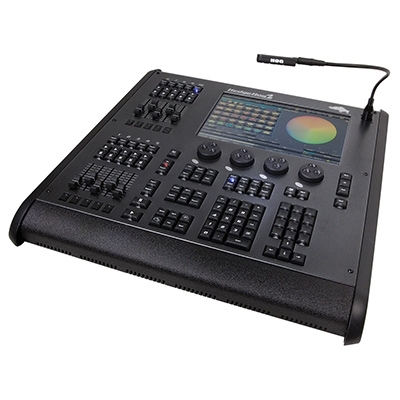
| High End HedgeHog 4E
The HedgeHog 4 is compatible with the Hog line.
It can handle a large lighting rig with the ability to
build a large amount of cues & scenes. It has four
encoder wheels allowing you to adjust fixtures and
other parameters quickly and simply. | Physical DMX Outputs: | 2 (Expandable with accessories) | | Faders: | 10 | | DMX Addresses: | 2,048 (Expandable with accessories) | | Accessories: | Playback/Master Wings/DP-8000 | | Downloadable Specs | | |
| 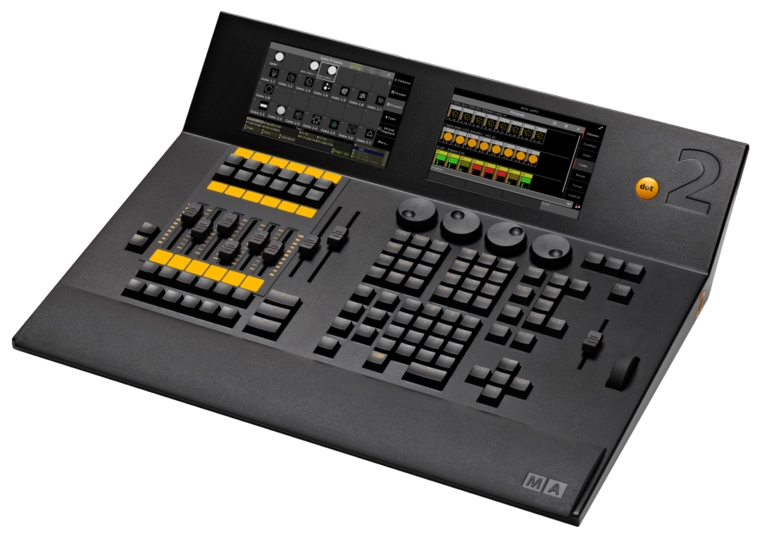
| MA Lighting Dot2 Core
The Dot2 is a simple to use console that's good
for those familiar with the larger MA consoles,
but that want a simpler console. You can easily
set scenes and cues and it can use Art-Net and
sACN to run fixtures. This is a good fit for those
familiar with MA consoles and have a medium to
large sized rig of moving lights, LEDs and more. | Physical DMX Outputs: | 4 (Expandable with accessories) | | Faders: | 6 | | DMX Addresses: | 4,096 (Expandable with accessories) | | Accessories: | Fader & Button Wings, Node | | Downloadable Specs | Demo Video | |
| 
| ETC Ion 2000 The Ion packs the ease and operational
style of the Eos in a smaller, 19" wide package.
This console is the perfect solution for
space-challenged venues. It provides full
control of LEDs, conventional fixtures & movers. | Physical DMX Outputs: | 2 (Expandable with accessories) | | Faders: | 1 Master Playback Pair | | Fixtures (Channels): | 16,000 | | DMX Addresses: | 2,048 (Expandable with accessories) | | Accessories: | Fader Wings, RPU, RVI | | Downloadable Specs | | |
| 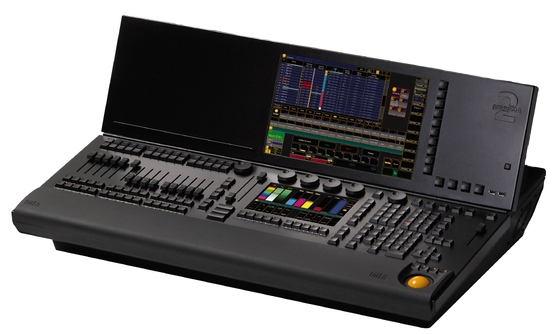
| MA Lighting grandMA2 Ultra-Light The grandMA2 Ultra-Light console features the full
network performance of the grandMA2 series.
It can handle almost an infinite number of presets,
cues, pages, sequences and effects.
It is great for medium to larger size venues. | Physical DMX Outputs: | 6 (Expandable with accessories) | | Faders: | 15 | | DMX Addresses: | 4,096 (Expandable with accessories) | | Accessories: | Node, Fader Wing, NPU, VPU | | Downloadable Specs | | |
| 
| ETC Gio 4000 Gio has a fast, accessible control surface and integrates
two articulating multi-touch displays. It gives complete
control of conventional & moving lights, LEDs, and
media servers. It features multiple playback faders &
cue lists, 12 discrete users & 16,000 control channels. | Physical DMX Outputs: | 2 (Expandable with accessories) | | Motorized Faders: | 10 | | Fixtures (Channels): | 16,000 | | DMX Addresses: | 4,096 (Expandable with accessories) | | Accessories: | Fader Wing, RPU, RVI | | Downloadable Specs | | |
| 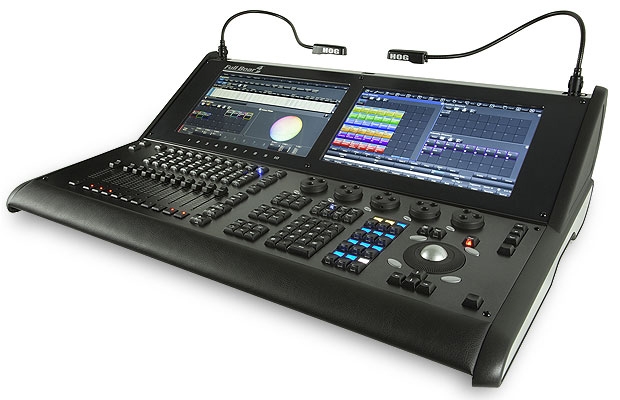
| High End Systems Full Boar 4 The Full Boar 4 has all the power of the Hog 4 in a
more compact package. It allows for total expansion
enabling you to create, manage, edit and playback all
types of shows. The Full Boar 4 features 10 point multi
touch, motorized faders & solid state HDD to name a few. | Physical DMX Outputs: | 4 (Expandable with accessories) | | Motorized Faders: | 10 | | DMX Addresses: | 6,144 (Expandable with accessories) | | Accessories: | Playback & Master Wings, DP-8000, Widgets | | Downloadable Specs | | |
| 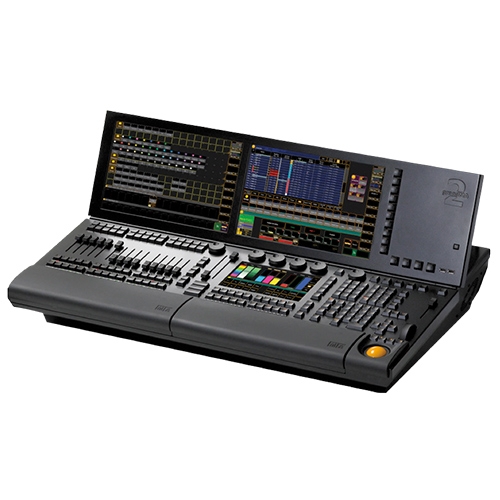
| MA Lighting grandMA2 Light The grandMA2 Light console is the perfect tool to
control multiple lighting fixtures- conventionals,
moving lights, LEDs, video, and media. It can
handle an almost infinite number of presets, cues,
pages, sequences, and effects. Its motorized faders
& 2 internal monitors set it apart from the UltraLight. | Physical DMX Outputs: | 6 (Expandable with accessories) | | Motorized Faders: | 15 | | DMX Addresses: | 4,096 (Expandable with accessories) | | Accessories: | Node, Fader Wing, NPU, VPU | | Downloadable Specs | | |
| 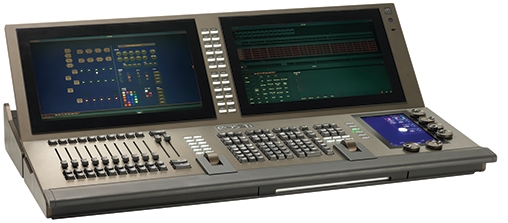
| ETC Eos Titanium 8000 The Eos Titanium features large format, multi-touch
displays with a large programming surface. It utilizes
the right tools to realize art with the tight timetable of
professional productions. The EOS was built for novices
and professionals alike by keeping everything consistent
and predictable. | Physical DMX Outputs: | 2 (Expandable with accessories) | | Motorized Faders: | 10 | | Fixtures (Channels): | 16,000 | | DMX Addresses: | 8,192 (Expandable with accessories) | | Accessories: | Fader Wing, RPU, RVI | | Downloadable Specs | | |
| 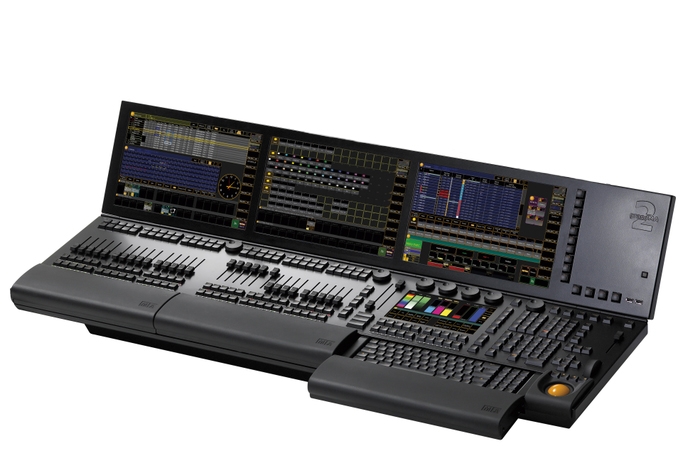
| MA Lighting grandMA2 Full The grandMA2 full offers control of conventional lights,
moving lights, LED fixtures, and media. Equipped with
the most up to date technology and special features,
the grandMA2 is suitable for all lighting segments
and supplies fast control of all connected fixtures &
channels. The console offers extremely flexible and
comfortable ways of programming, including nearly
infinite numbers of presets, cues, pages, & effects. | Physical DMX Outputs: | 6 (Expandable with accessories) | | Motorized Faders: | 30 | | DMX Addresses: | 4,096 (Expandable with accessories) | | Accessories: | Node, Fader Wing, NPU, VPU | | Downloadable Specs | | |
